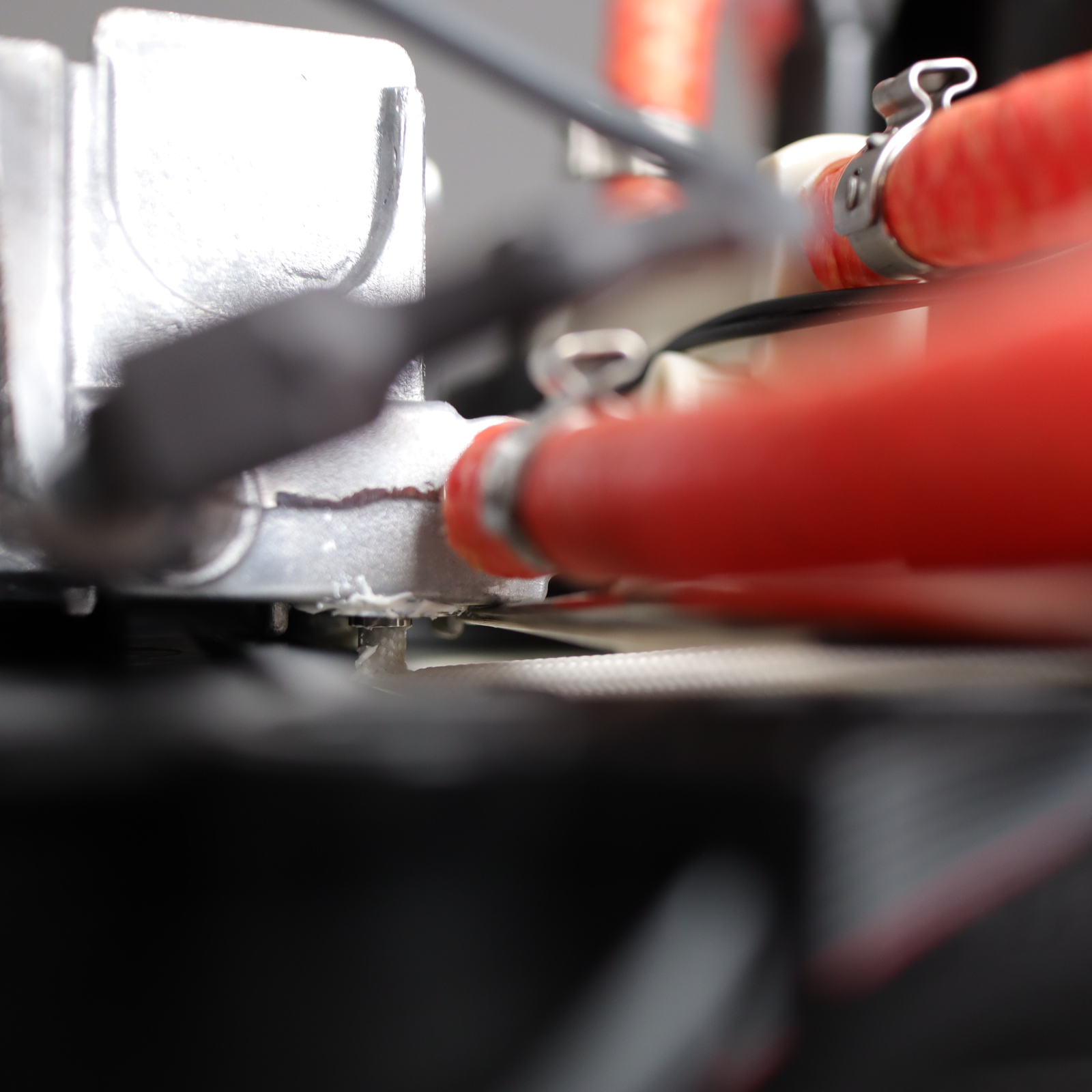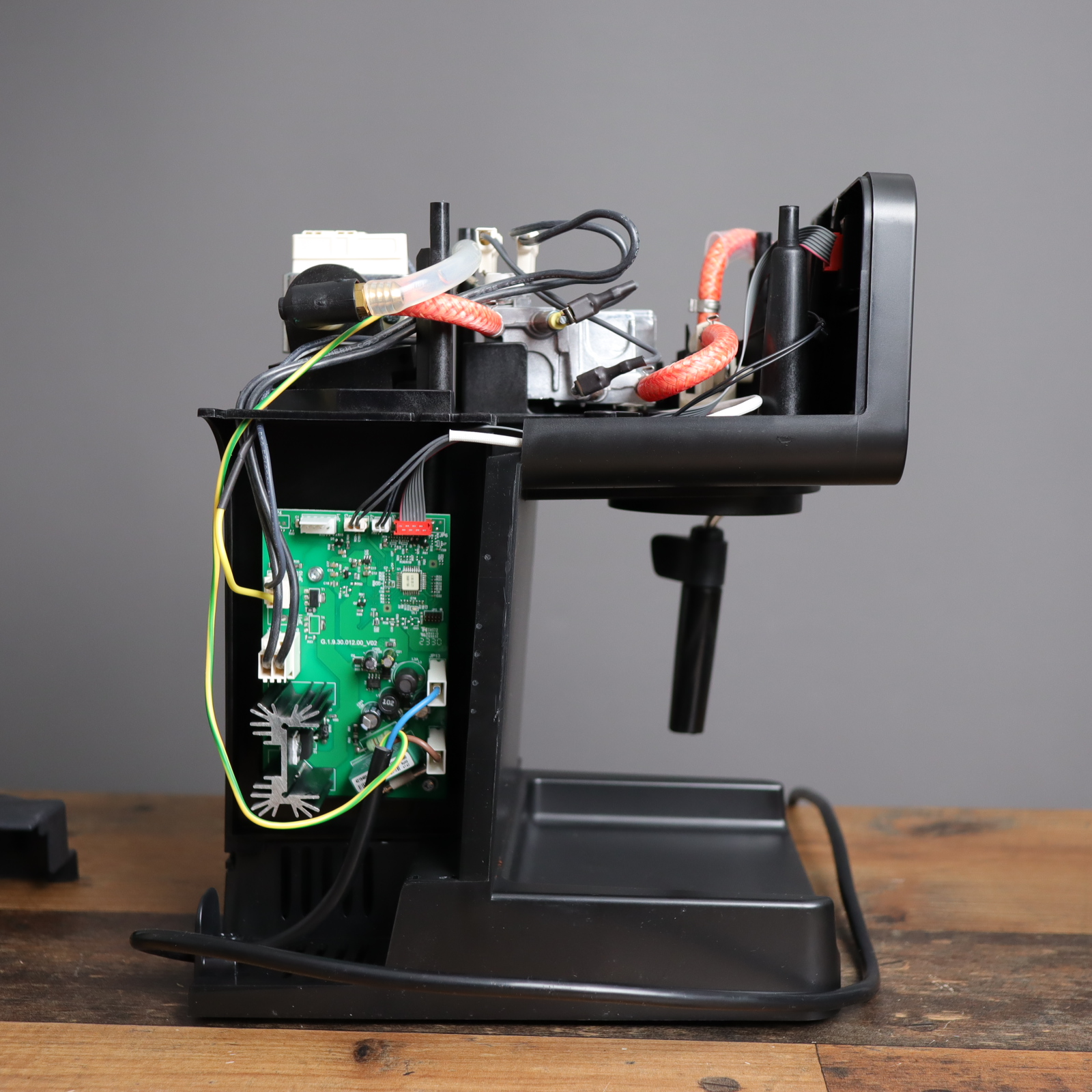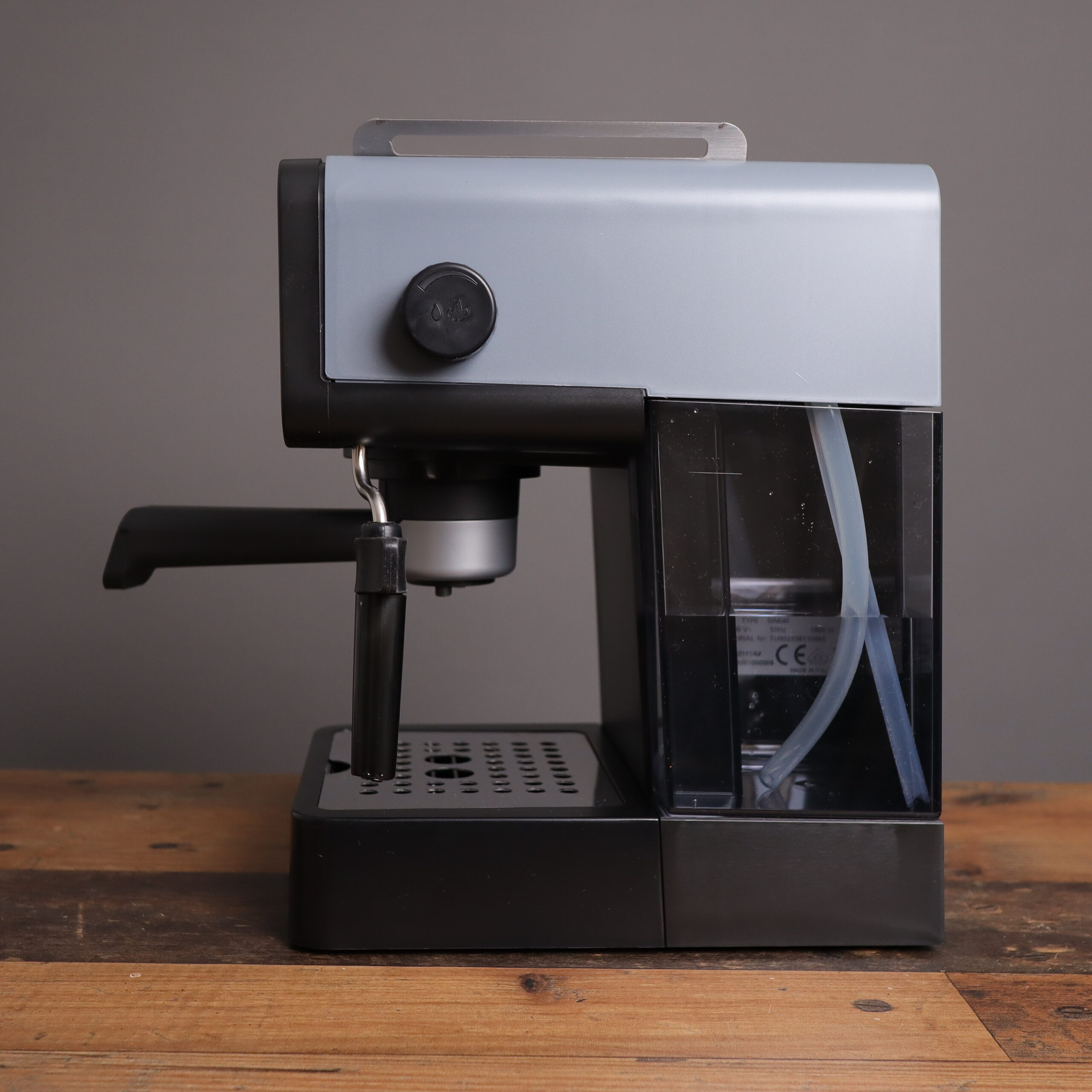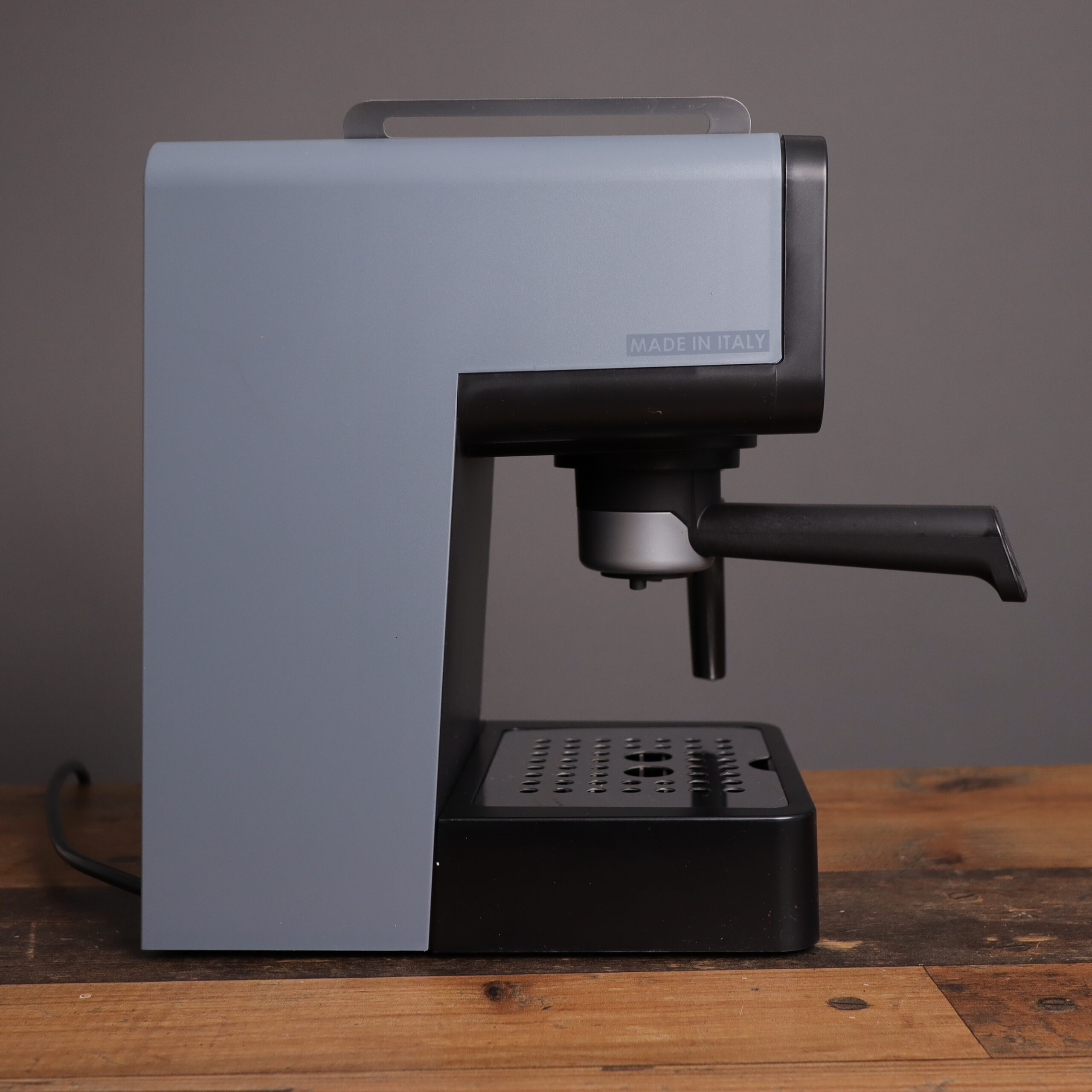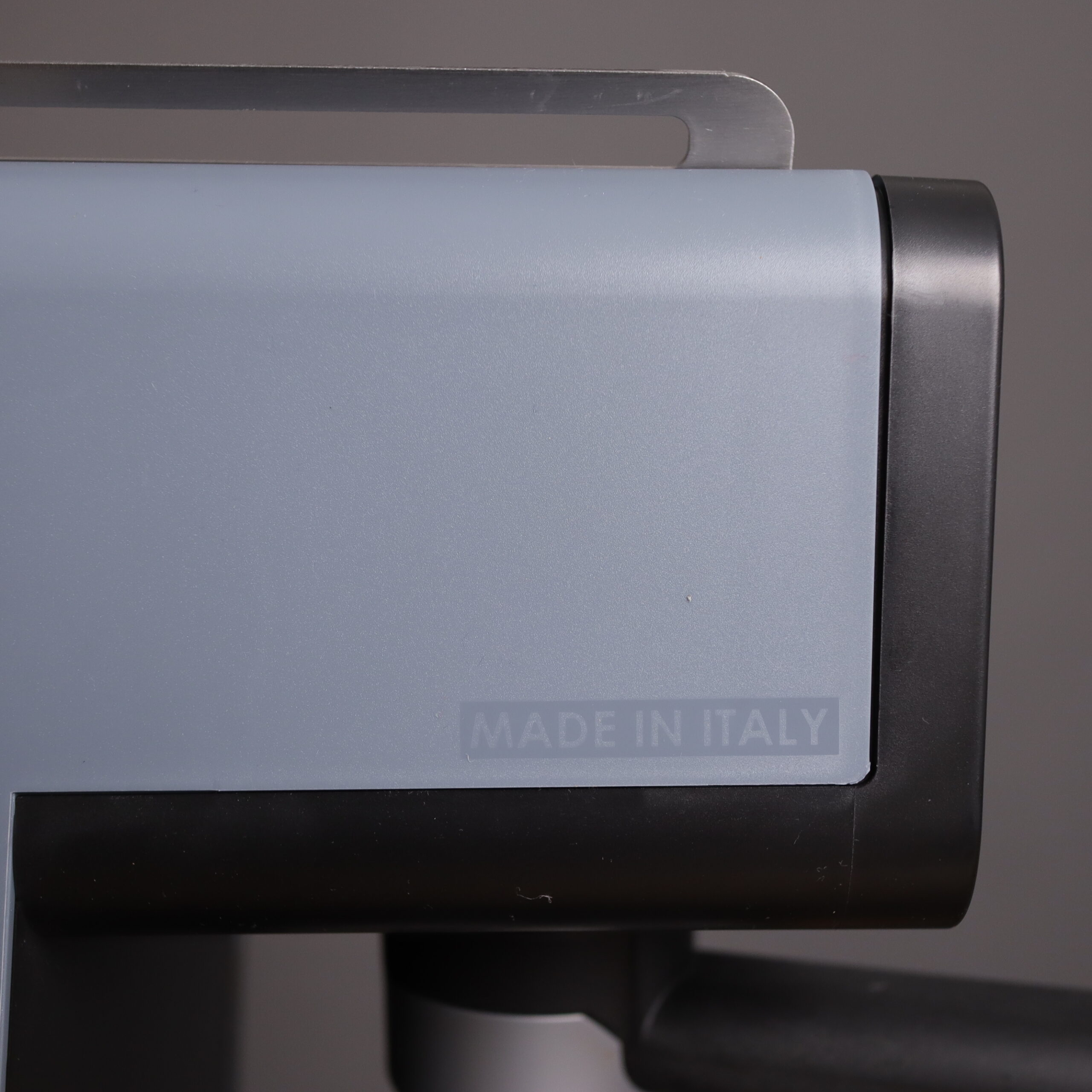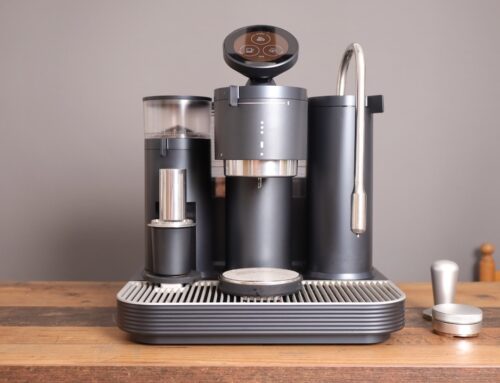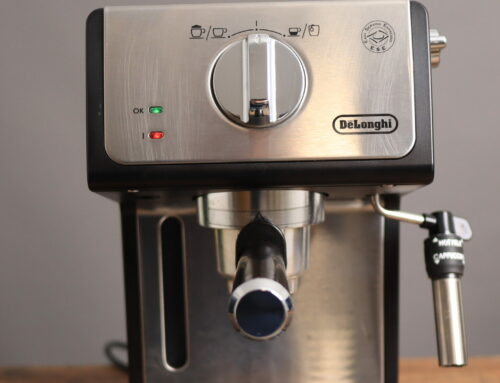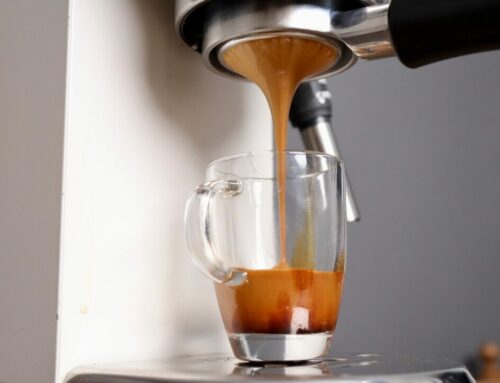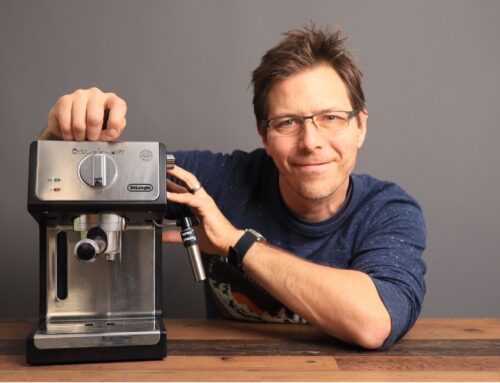Gaggia Espresso Deluxe: PID Espresso for €200
Could it really be possible, that an Italian manufacturer has managed to design an espresso machine with an included PID, and that for only €200? Well, as it turns out, yes sir! The new line of espresso machines by Gaggia come equipped with a thermoprobe for its PID – I opened up the machine myself to have a look. Besides the PID, the machine also offers plenty of power with its 1900 watt, stainless steel lined thermoblock. This configuration also offers great milk steaming for silky milk, especially when the panarello is removed.
Here are a few pictures to whet your appetite, but let’s talk more below about the aesthetics, build and features of this brand new line by Gaggia.
The Looks and Features of the Gaggia ‘Espresso’
If you search for ‘Gaggia Espresso’ on Google, you’ll most certainly end up finding the Gaggia Classic Pro – arguably the company’s most iconic design to date. Therefore I feel they must have some high hopes for this little espresso machine, if they’re going to push past that established nomenclature indexing.
The ‘Espresso’ comes in 3 different trims, with slightly different configurations: Style, Deluxe, and Evolution. I have the Deluxe myself, and it comes with a nice stainless steel cup warming tray above, as well as a stainless steel flat and holed plate, kissing the top of the drip tray. It’s good, that Gaggia added these few metal design elements, as nearly all the rest of the machine, save the thermoblock, is made of plastic.
If Gaggia was going for organic, they hit the nail on the head. The small and lightweight machine features rounded edges on both the face, the housing, and the drip tray. Heck, even the cup warming tray is curved. The control panel consists of only 3 buttons: power, brew, and steam mode. The rounded aesthetics and simple interface make for a friendly look on one’s counter.
The brew group is 53mm, and the portafilter is made out of metal and plastic. Unfortunately, the espresso will only see plastic, as the inner part of the portafilter is soley plastic. I recommend getting yourself a bottomless portafilter for that reason. Edesia makes a good one.
Of course not to be missed, this machine is made in Italy – a welcome characteristic, considering the flood of machines coming in from Asia in these recent years. Italy is, after all, the birthplace of espresso, and Italians are great at designing machines.
PID for just €200?
Yes, there is an integrated PID in this machine. I have opened up the machine and found the probe on the exit side of the thermoblock, mounted with thermal paste. It is pretty awesome that this much desired feature is included on such a budget machine. This should offer more consistent results, as the machine will be better at regulating the temperature during the extraction.
What is kind of funny however, is the inclusion of pressurized baskets with a PID machine. Pressurized baskets create more of a soup than an actual puck, and this is generally seen as a disadvantage compared to conventional baskets. Nevertheless, even a pressurized system will benefit from heat applied consistently over time, so I get it. Also, it’s easy to just add a non-pressurized basket, like those from IMS.
Panrello and Milk Steaming
I really find the panarello superfluous on these machines. They do help to introduce air, but they are a pain to clean, and they will not allow for proper microfoam. That’s why I just remove it. With the panarello removed, this machine steams like a beast, offering really well textured, silky milk. The steam wand is admittedly a little short, but it rotates, and does in fact have a few degrees of angulation outwards, so that’s good.
So how’s the Espresso?
In my limited time with this machine so far, it has made pretty decent espresso – nothing to write home about so far, but decent. Good body, some sweetness, chocolate. That being said, I think it could benefit from a puck screen, as the shower screen really blasts the center of the puck, forming a crater. I do believe that this causes a gradient in the puck, when using a non-pressurized basket. I plan to use this more in the coming weeks, do some temperature tests, and try the employ of a puck screen to see what I can tickle out of it.
Empirical Measurements
So far I have been doing some testing in basic mode, and also advanced mode. What I mean is that the basic mode is as the machine was delivered, and the advanced is with a bottomless portafilter, unpressurized basket, and with the panarello removed.
Most vibratory pump machines have a water flow of between 6-8 ml/sec. This machine is actually at the lower end of that range, 6 ml/sec. This surprised me, as it does seem to really force the water out through the shower screen in a forceful spray.
Using this machine in basic mode, it performs as expected, without issue. As for trying to use in advanced mode, I have been finding some frustrations. I find that the shots flow either way to fast, when the grind is a smidge too coarse, or if the grind is just a smidge too fine, it starts to spurt out between the basket rim and the brew group. This is just a very tiny range of difference on my Eureka Specialita. I think that this machine would benefit from a lower powered spring in the OPV in advanced mode, which out to make the extractions a bit more gentle.
Pros and Cons of the Gaggia Espresso?
Well, I love that this machine is designed, and even built in Italy. I love that it’s easy to take apart – just 6 Torx screws. It’s great that they added a PID. It performs pretty well for a machine of its price class, but not without downsides of course. It is a pretty flimsy and light machine, especially with the cover off, one can feel the lack of rigidity in the plastic framing. The buttons on the front while they look nice, are so dimly illuminated, that it’s hard to tell if the machine is on or not. The use of so much plastic, even in the portafilter is too bad. Finally, the shower screen and how forcefully it craters the puck is a shame. But, come on. It’s €200, it comes with a PID, and it’s not even made in China.
Pros:
- Quick heat up time
- PID built in!
- Italian design
- Powerful steam
- Auto cool down of the thermoblock
- Cute design
Cons
- Shower screen distribution just in the middle – result is a cratered puck
- Only pressurized baskets included
- Dimly lit front buttons
- Light and flimsy
Specifications of the Gaggia Espresso Deluxe:
– Dimensions: 199 mm x 303 mm x 255 mm
– Weight: 3.7kg or 7 pounds
– 1900 watt thermoblock heater
– ABS plastic body framing, chromed metal logo, stainless steel drip tray cover and cup tray
– Auto standby of 30 minutes
– 1.2 liter water tank
– Made in Italy
Suggestions
I can only imagine how hard it is to design and build a machine like this, with PID in Europe, at such a low price. That being said, I think it would have been nice to market this more towards people wanting an option to use with non-pressurized baskets. The exclusion of said baskets, and a plastic bottom to the portafilter indicates that Gaggia is aiming for those who want to stick with pressurized extractions. Also, I really think they ought to illuminate the control buttons better.
Competitors
Competition is fierce in this price range! I think Gaggia is squarely trying to compete with the Delonghi Dedica, which I feel is a better machine except for the PID feature. Another competitor would be the Breville Bambino. Anyway, I am curious to see how this machine resonates on the market. Until then, thanks for dropping by!

